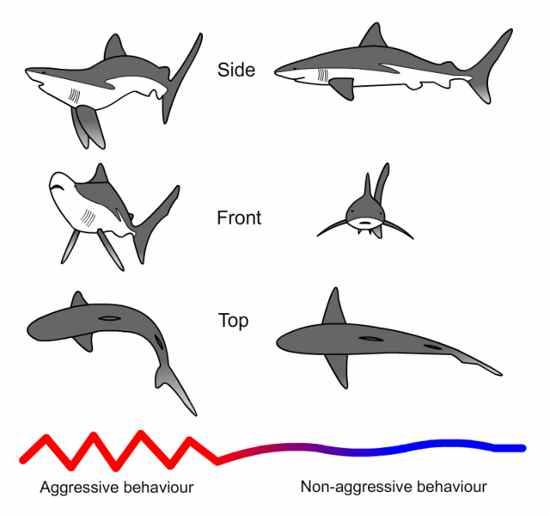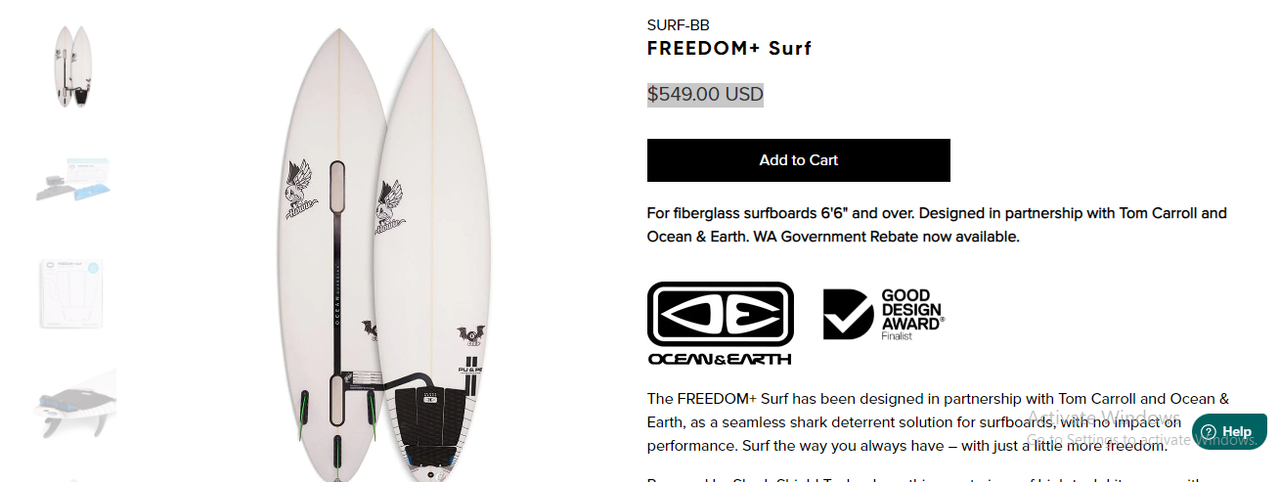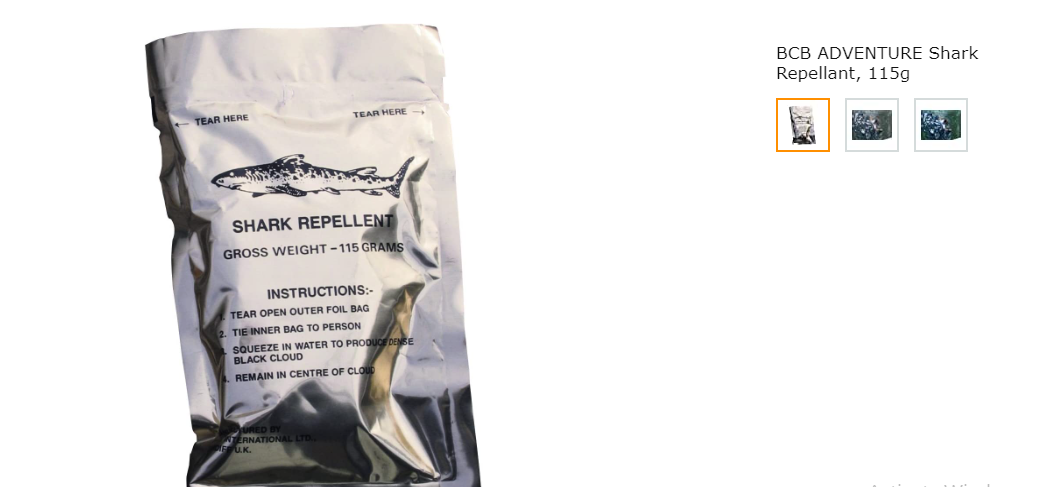Part
01
of two
Part
01
How to survive an encounter with a shark?
Key Takeaways
- One key to surviving a shark attack is observing its stance. Being able to tell if the shark is uninterested, curious, or ready to attack will help choose an informed escape strategy.
- While a shark's back may be impenetrable, other areas such as its gills, eyes, and nose are sensitive and can deter the animal if targeted.
- Sharks, being ambush predators, respect assertiveness. Maintaining eye contact makes them less comfortable or confident to attack. William Winrar, a record-holding free diver who encounters sharks during his free dives, says, "If you don’t act like prey, they won’t treat you like prey."
Introduction
This report contains seven best practices for surviving an encounter with a shark as endorsed by experts and survivors. These practices include maintaining eye contact, backing away by swimming on the back, keeping a defensive position, staying calm, observing, being positioned vertically, and fighting back.
Do Not Panic
- During a shark attack, swimmers are encouraged to stay calm and alert. Swimming away frantically will only incite sharks to pursue.
- Sharks are drawn to splashing and thrashing movements. Panicking or splashing around during a shark encounter will only heighten its interest.
- While one must stay calm, playing dead is dangerous. If a shark suspects that its opponent is dead, it may assume that it has won the fight and may proceed to take a bite. Playing dead also makes it easier for a shark to attack successfully.
- When a shark swims toward humans, it may be out of sheer curiosity. An approaching shark is not always a threat. However, swimming erratically while trying to escape will only awaken its predatory senses.
- If a shark only appears to be passing through, one should roll up into a ball and appear smaller. This way, the shark conceives the person as less of a threat and may swim away.
- According to shark expert and former chair of the UK-based Shark Trust and Shark Conservation Society, Richard Peirce, curling up into a ball can make one less of a competitor, "if a shark sees you as a competitor for its food source, that can be one reason it attacks you."
Maintain Eye Contact
- As ambush predators, sharks are less inclined to attack when the prey maintains eye contact. Watching the shark calmly as it circles makes it less comfortable or confident to attack.
- Experts recommend that one postures the body toward the predator, so it knows it is being watched.
- Sharks also respect assertiveness. Maintaining eye contact calmly signals non-aggressive confrontation. This way, the shark knows that its target is not docile and will respond to an attack.
- When maintaining eye contact with a shark, the predator is likely to retreat before attempting a strike. This gives ample time to escape.
- William Winrar, a record-holding free diver who encounters sharks during his free dives, says, "Once we make eye contact, the shark knows we have seen them and therefore taken their advantage away. This generally gives us the advantage and keeps them from slipping into an instinctual mode."
Observe
- One of the keys to surviving a shark attack is observing its stance. Being able to tell if the shark is uninterested, curious, or ready to attack will help choose an informed escape strategy.
- When a shark shows signs of aggression or is about to attack, it is best to match up as an equal contender and earn its respect by standing firmly and flaunting one's size.
- A shark circling its prey is gathering momentum to strike, while a zigzagging shark is looking for angles from where to attack. These are signs to prepare for a confrontation.
- Sharks do not typically prey on humans. Nine out of ten people who swim with sharks say they do not feel threatened. Many attribute a shark's probing nature to inquisitiveness, saying "it was just curious."
- It is worth noting that "bump and bite" and "sneak" attacks, which include the shark initially circling the victim, are extremely rare and likely result from the animal feeling threatened. Surprise "hit and run" attacks are more common but less dangerous, as they typically only involve one bite.
Maintain a Defense Position
- Finding a position that limits the shark's angle of attack is a crucial step to surviving an encounter. While the animal is charging forward, it is best to keep one's back to a coral reef, piling, boulder, or any other obstruction.
- This position will eliminate the risk of being attacked from behind. The key is to cut off the angles by ensuring that one's back is not visible to the shark.
- If there are other people around, it is possible to back up against each other. Forming a human shield can also lessen the impact of the attack.
- According to Chris Lowe, a professor in marine biology and director of the Shark Lab at California State University, "keep your back to something like a coral reef, then you've only got one direction to look."
Fight Back
- It is important to fight back during a shark attack. Aiming at specific soft spots such as the gills, eyes, and nose can deter a shark.
- Sometimes, all that is needed is a push. The animal only needs to be shoved or pushed with a weapon or sticks. Sharks are known to let go of aggressive prey and pursue easier targets. This strategy can buy time for an escape immediately after it turns its back.
- Any equipment at hand can be used as a weapon. Peirce, who has had multiple encounters with sharks, claims that a nudge on the nose with a shark billy is enough to save the situation.
- In the eventuality of a shark attack or bite, the victim is advised to target sensitive areas and continue pressing until the animal backs off. This is because sharks may probe further after the first bite and become more aggressive. Other sharks may also pick up the scent of blood and join in.
- De Gelder, who survived a shark attack in 2009, recommends "going wild, anything that shows the shark you won’t take it."
- On a related note, Winrar says, "If you don’t act like prey, they won’t treat you like prey."
Remain in a Vertical Position
- According to Australia Wide First Aid, when one has to move around a shark, it is recommended to tread water (as opposed to swimming) and remain in a vertical position. It allows the shark to distinguish humans from his usual prey, which is recognized horizontally (e.g., seals).
- It is especially important given that most shark attacks on humans are errors. According to Kiersten Stump, marine biologist, "It’s mistaken identity. Absolutely no species of shark includes humans in their diet."
- A 2021 study published in Royal Society Interface found that sharks are unlikely to be able to distinguish paddling surfers or swimmers from seals as their ability to recognize details is much lower compared to human. It is especially true for young sharks, responsible for a large share of such mistaken attacks, due to their smaller eyes.
- The lead author, Dr. Laura Ryan of Macquarie University, stated, "They’re not these mindless killers, but we just happen to look like their food."
Back Away Swimming on the Back
- However, when finding an opportunity to move away from sharks, it is recommended to swim on one's back to get to safety more efficiently, especially in case of a bite.
- Swimmers are advised to back up slowly towards the shore or a boat while maintaining eye contact (as noted above).
- By slowly backing away, one is alert and able to respond to sudden movements.
- It is important to make sure one is not in the shark's way. Swimmers can unconsciously become an obstacle between a shark and open waters and may trigger an attack. The key is to leave the water as soon as possible without exciting the shark.
- While swimming backward, do not displace water or splash around. According to Peirce, "keep the animal in sight and very slowly and gently try to swim backward and get into shallow water."
Research Strategy
In compiling the best practices for surviving a shark attack, we leveraged reputable sources such as CNN Travel, Surfer Today, and Popular Science. We chose the recommendations that were repeated across multiple sources and supported by expert opinions.









